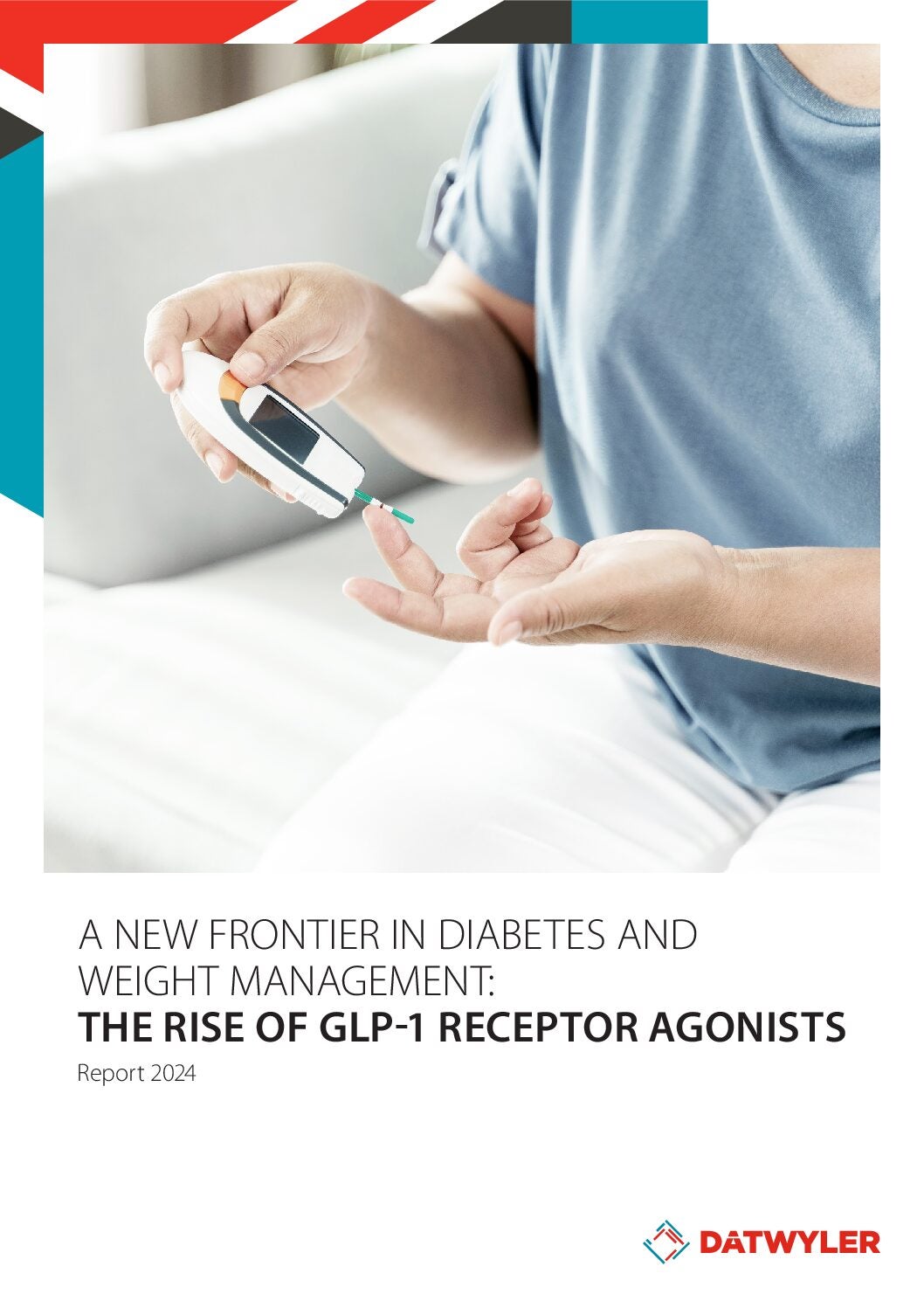
According to GlobalData, GLP-1 receptor agonists are set to become the best-selling drugs in 2024. Five key drugs will lead this charge, including Mounjaro, Ozempic, Wegovy, Cagrisema, and Rybelsus. By 2029, these five drugs are forecast to capture 83% of the market, with Eli Lilly’s Mounjaro leading the sales. In fact, by 2029, Mounjaro is expected to generate annual sales of $33.4bn.
So, where did this all start? In this article, we discuss how GLP-1 receptor agonists work, how they have evolved, and why the latest generation of these drugs is set to revolutionise the pharmaceutical market for diabetes and weight loss management.
How do GLP-1 receptor agonists work?
GLP-1 receptor agonists treat diabetes by stimulating the release of insulin and inhibiting the release of glucagon. This lowers post-meal blood sugar levels, preventing hyperglycaemia. GLP-1s also regulate appetite by slowing down the absorption of glucose into the bloodstream. This lowers the speed at which the stomach empties after a meal, thus increasing satiety and decreasing food intake.
While these drugs are currently revolutionising diabetes care and weight management, they are not new. The first GLP-1 receptor agonist, exenatide, was introduced by Eli Lilly back in 2005. As further products were commercialised by both Eli Lilly and Novo Nordisk over the next decade, notable improvements in formulations were seen. Instead of the twice-daily injections required by exenatide, for example, patients could now benefit from the less frequent dosing schedules of dulaglutide – the first GLP-1 to require a once-weekly injection.
In addition, 2014 saw the first approval for a GLP-1 agonist as a treatment for chronic weight management, although GLP-1s did not take off in the weight management space for several more years. This all changed with the introduction of semaglutide by Novo Nordisk, a compound which can help patients to achieve an average weight loss of 12.4%. First indicated as a diabetes treatment in 2017 and then approved for obesity in 2021, demand surged for both products, making the medications increasingly difficult to obtain.
Since then, the introduction of tirzepatide (Mounjaro/Zepbound) has further raised the potential for GLP-1s as a vehicle for significant weight loss. This drug is a ‘dual agonist’, meaning it works at both the GLP-1 and the glucose-dependent insulinotropic polypeptide (GIP) receptors. In trials, 15mg weekly doses of tirzepatide helped participants achieve an average weight loss of 18%.
The growing demand for GLP-1s
As the prevalence of obesity and Type 2 diabetes continues to grow, the demand for GLP-1 receptor agonists will soar. Global statistics from the World Health Organization show the incidence of adult obesity has more than doubled since 1990, with diabetes present in 8.5% of adults over 18 years of age in 2014.
To add to the concern, diabetes mortality rates are also on the rise. While the probability of dying from other common noncommunicable diseases (including cancer, cardiovascular diseases and chronic respiratory diseases) between the ages of 30 and 70 decreased by 22% from 2000 to 2019, the WHO reports a 3% increase in age-standardised mortality rates from diabetes. In lower-middle-income countries, this rate increased 13% between the same years.
There is a serious need to optimise diabetes and weight management care, and GLP-1 receptor agonists could be part of the answer in certain cases. By 2033, GlobalData predicts this class of drugs to bring in sales of $168bn across 68 pharmaceutical markets, with North America accounting for 68% of those sales.
Download the report below to learn more about the market for GLP-1 receptor agonists and how patient-friendly solutions for primary packaging are helping to deliver life-changing drugs to patients in need.



